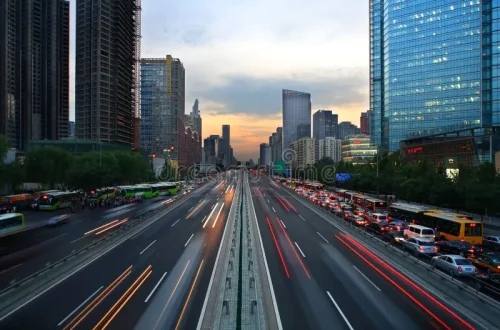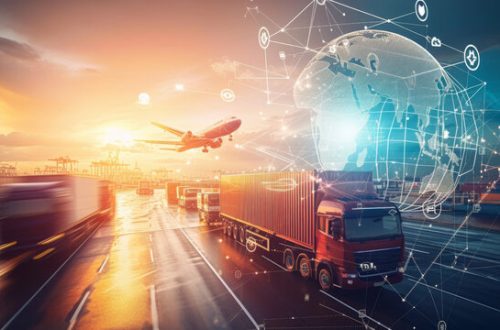The Hyperloop, a revolutionary concept in high-speed ground transportation, promises to shrink our world and redefine the possibilities of long-distance travel. The brainchild of visionary entrepreneur Elon Musk, the Hyperloop envisions a system of pods or capsules that travel at near-supersonic speeds through a network of low-pressure tubes.
This remarkable feat of engineering is made possible by a combination of magnetic levitation and a near-vacuum environment within the tubes, which dramatically reduces air resistance. The result is a mode of transportation that is not only incredibly fast but also energy-efficient and environmentally friendly. While the development of a fully operational Hyperloop system is still in its nascent stages, several companies around the world are actively working to turn this ambitious vision into a reality. The challenges are significant, but the potential to create a faster, cleaner, and more connected world makes the Hyperloop a tantalizing glimpse into the future of transportation.
The fundamental principle behind the Hyperloop is the reduction of air resistance to enable extremely high speeds with minimal energy consumption. By operating in a near-vacuum environment with air pressure reduced to about 1/1000th of atmospheric pressure, the pods encounter dramatically less drag than conventional trains or cars. This allows them to reach speeds of over 700 mph while consuming significantly less energy than traditional high-speed transportation methods. The concept combines elements of pneumatic tube transport with magnetic levitation technology to create a unique and efficient mode of travel.
The pod design is a critical component of the Hyperloop system, requiring careful engineering to ensure passenger safety and comfort at extreme speeds. These sleek capsules are designed to carry between 12 and 28 passengers, depending on the specific implementation, and feature advanced life support systems to maintain a comfortable environment. The interior design prioritizes space efficiency while providing passengers with necessary amenities for journeys that could last several minutes to over an hour, depending on distance. Safety systems include emergency brakes, communication equipment, and redundant life support systems to handle various scenarios.
The tube infrastructure represents one of the most significant engineering challenges in developing the Hyperloop. These massive structures must maintain a near-vacuum environment while withstanding various environmental conditions, including temperature variations, seismic activity, and weather extremes. The tubes are typically elevated on pylons to minimize land use and reduce construction costs, though some implementations propose underground tunnels. Maintaining the vacuum requires sophisticated pumping systems and careful sealing to prevent air infiltration that would reduce efficiency and speed.
Propulsion and levitation systems are key to the Hyperloop’s functionality, with most designs utilizing magnetic levitation to eliminate friction between the pod and the track. Linear induction motors or other electromagnetic systems provide both propulsion and braking, allowing for smooth acceleration and deceleration. Some designs also incorporate air compressors at the front of the pod to redirect air to the rear, creating additional thrust and further reducing the energy required to maintain the vacuum. These systems must work in harmony to ensure safe, efficient, and comfortable travel.
The potential benefits of Hyperloop technology extend far beyond speed. With travel times between major cities reduced to mere minutes, the technology could revolutionize urban planning and economic development. A journey from Los Angeles to San Francisco, which currently takes about 6 hours by car, could be completed in just 30 minutes. This connectivity could create massive economic zones spanning hundreds of miles, allowing people to live in one city and work in another without the constraints of current travel times. The environmental impact could also be significant, as Hyperloop systems are designed to be powered by renewable energy sources.
Despite its promise, the Hyperloop faces numerous technical, economic, and regulatory challenges. The cost of constructing the tube infrastructure is enormous, with estimates ranging from $10 million to $50 million per mile depending on terrain and design. Safety regulations for a completely new mode of transportation are complex and time-consuming to develop. The psychological comfort of passengers traveling at extremely high speeds in a confined tube must also be addressed. Emergency evacuation procedures, maintenance access, and system reliability are all critical considerations that must be solved before commercial implementation.
Several companies are actively developing Hyperloop technology, each with their own approach to solving the technical challenges. Virgin Hyperloop, founded by Richard Branson, has conducted successful passenger tests and is working on commercial implementations. Other companies like Hyperloop Transportation Technologies and Arrivo are pursuing different technical approaches and routes. Government agencies in various countries are also exploring the technology, with feasibility studies underway in the United States, Europe, and Asia. The first commercial Hyperloop routes are tentatively planned for the late 2020s or early 2030s, though timelines continue to shift as development progresses.
As we gaze into the future of terrestrial transportation, the Hyperloop represents a bold vision of what might be possible with sufficient technological advancement and investment. While significant challenges remain, the convergence of advanced materials science, propulsion technology, and systems engineering suggests that high-speed tube transport could become a reality within our lifetimes. The Hyperloop may not replace all other forms of transportation, but it could occupy a unique niche for medium-distance travel between 100 and 1000 miles. Whether this ambitious vision will fully materialize remains to be seen, but the pursuit of such transformative technology continues to push the boundaries of what we consider possible in transportation.





